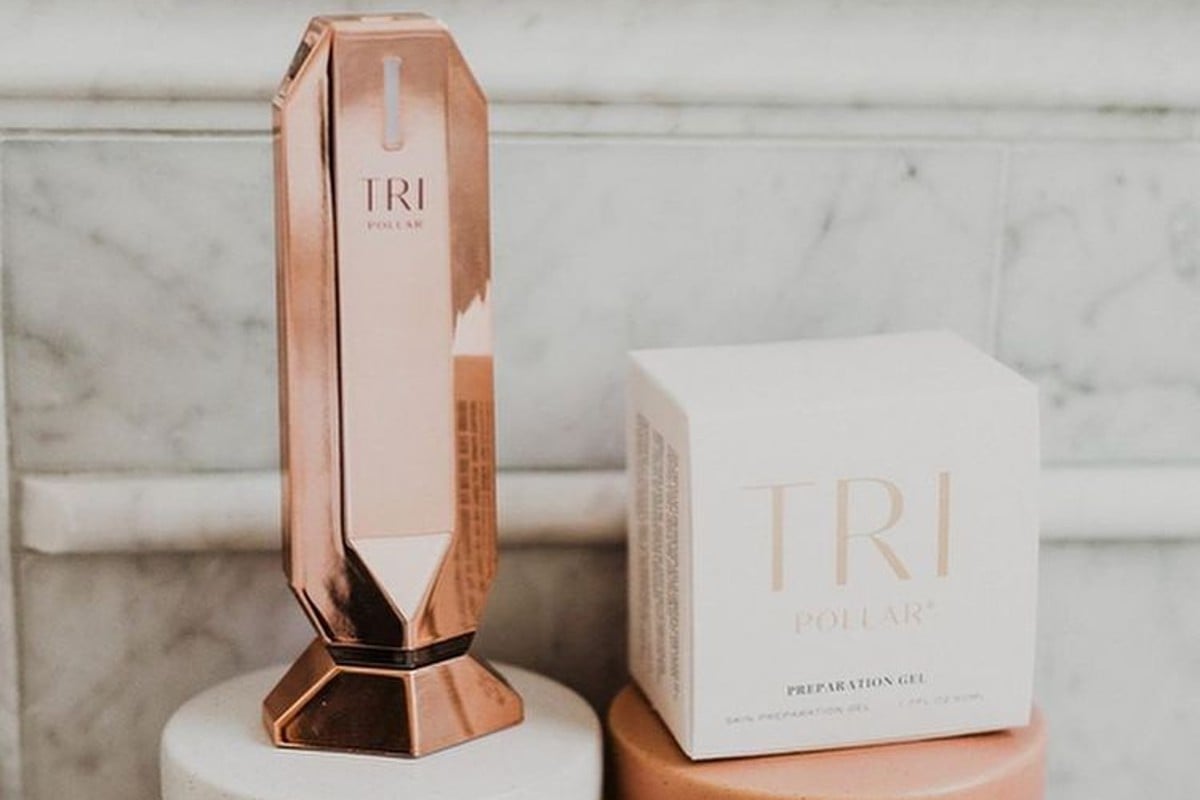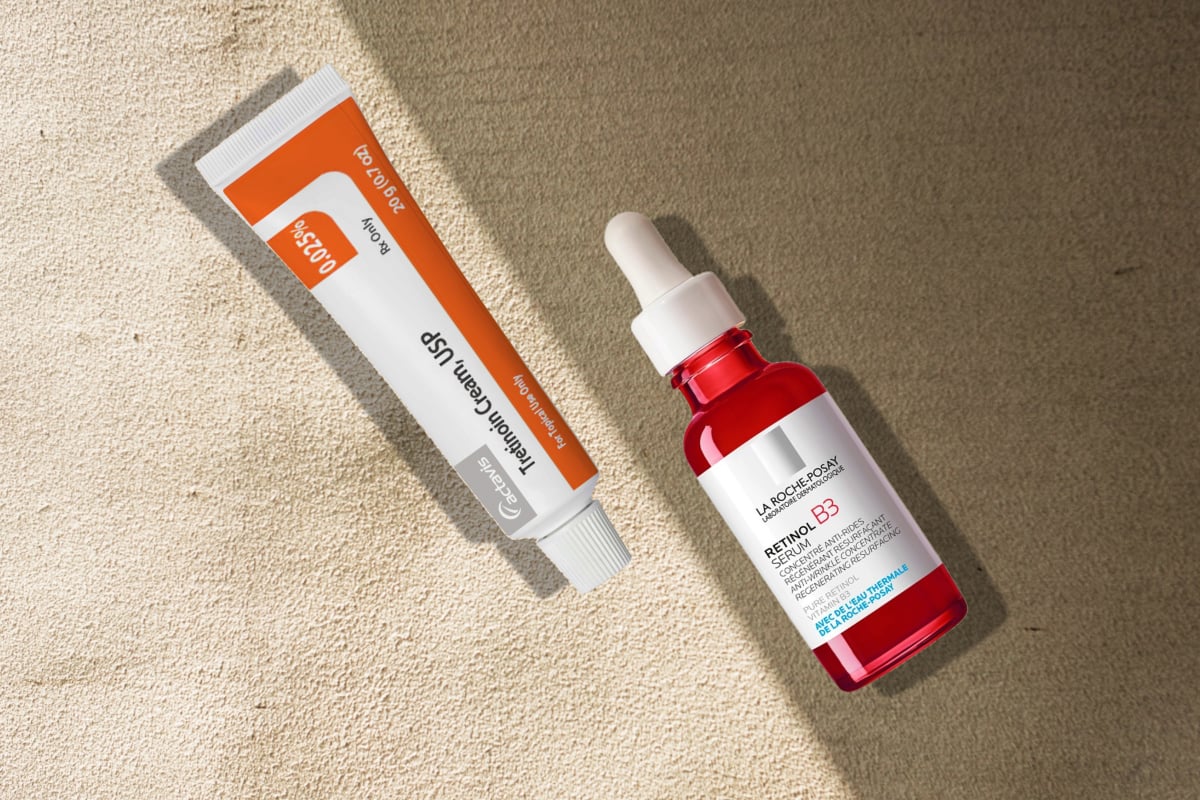Acne, rosacea, or hyperpigmentation? Azelaic acid is a key ingredient that can help fix these conditions and restore your skin’s radiance and clarity. But how safe and effective is it, and how does it compare to the heavyweights like tretinoin and hydroquinone? Next, we weigh in on the benefits of azelaic acid in skincare. We’ve read dozens of studies and chatted with industry professionals to answer all your questions.
- What is azelaic acid?
- What are the benefits of azelaic acid?
- What are the side effects of using azelaic acid on the skin?
- Who should use azelaic acid?
- When should you not use azelaic acid?
- How to incorporate azelaic acid into your skincare routine?
- How is azelaic acid different from glycolic acid or salicylic acid?
- Can you use azelaic acid together with retinol or vitamin C?
- Frequently asked questions
- Sources
What is azelaic acid?
Azelaic acid is a naturally occurring compound used to treat inflammatory skin conditions such as acne and rosacea. It can be derived straight from natural sources like wheat, barley, and rye or produced synthetically in labs for sustainability and stability reasons.
From a chemical standpoint, azelaic acid is classified as a comedolytic and keratolytic agent.[1] As a comedolytic, it inhibits the formation of comedones, small bumps that appear on the skin when dead cells and oil clog pores. On the other hand, the keratolytic properties allow azelaic acid to break down the keratin protein in the outermost layer of the skin. This action loosens the bonds between dead cells to facilitate their exfoliation.
Although azelaic acid doesn’t belong to the alpha-hydroxy acid (AHA) or beta-hydroxy acid (BHA) families, it works very much like glycolic and salicylic acids to unclog pores and reduce breakouts.
What are the benefits of azelaic acid?
Treats acne
Acne is caused by a combination of factors, including inflammation, bacteria, and clogged pores. Well, azelaic acid targets all these triggers. Studies have shown that the results obtained with a 20% azelaic acid-containing cream in the treatment of mild to moderate acne are similar to those of 0.05% tretinoin and 5% benzoyl peroxide—two of the most powerful acne treatments.[2] The best news is that, unlike other acne treatments, azelaic acid is more tolerable with a favorable safety profile and works on the skin without severe adverse effects.
Calms rosacea
People with rosacea can find relief in azelaic acid. It has anti-inflammatory properties that help calm irritated skin and reduce redness. Moreover, the antioxidant properties of azelaic acid come into play, as they neutralize free radicals—the culprits behind inflammation that often triggers rosacea.[3]
Corrects hyperpigmentation
Azelaic acid is touted as a highly effective depigmenting agent. So it deserves a place in your skincare routine if you’re dealing with an uneven skin tone. It addresses various skin pigmentation conditions by inhibiting the activity of tyrosinase—the enzyme involved in the production of melanin.[4]
Melanin is the pigment that makes your skin darker. Hence, by forcing the body to produce less of it, azelaic acid gives your skin a chance to regain its natural color. Furthermore, the exfoliation action of azelaic acid can also help brighten dark patches. It removes pigmented cells from the skin’s surface and promotes the growth of fresh ones.
However, we should point out that azelaic acid cannot make your skin tone lighter than its natural color. It only improves conditions such as melasma, sunspots, or post-acne scars, where the skin appears darker than it actually is. When it comes to effectiveness, research suggests that 20% azelaic acid is as effective as 4% hydroquinone in treating hyperpigmentation. It’s even better because it’s gentler on your skin and comes with fewer side effects.[5]
Refines skin texture
As an exfoliant, azelaic acid clears dead skin cells that cause dullness, clog pores, and contribute to the uneven and bumpy texture.
What are the side effects of using azelaic acid on the skin?
Although rare, azelaic acid can cause side effects like mild skin irritation, itching, and swelling. It’s more likely to experience them when using azelaic acid for the first time or if your skin is very sensitive or has an allergic reaction to the ingredient. If the side effects persist or become too intense, stop using the product or apply it less often and talk to your dermatologist as it may indicate a sensitivity or allergy.
Also, azelaic acid does not typically make the skin photosensitive, so it’s generally safe for daily use. However, you should still use sunscreen as part of your daily routine to protect your skin from sun damage.
Who should use azelaic acid?
Azelaic acid can help with a wide array of skin concerns. As you may have guessed, it’s especially good if you have acne, uneven skin tone (think dark spots, melasma), rosacea, and bumpy texture.
And don’t worry about azelaic acid not being compatible with your skin. The ingredient is suitable and works great on all types of skin, including oily, dry, breakout-prone, and sensitive skin. It’s also considered safe for use during pregnancy. But, of course, if you’re pregnant or breastfeeding, you should seek medical advice before using azelaic acid.
When should you not use azelaic acid?
It’s best to avoid using high concentrations of azelaic acid on sunburned or newly exfoliated skin (like right after tretinoin or chemical peels). The same goes if you have very dry, chapped, or damaged skin, as azelaic acid can be drying and its exfoliating effects impair the moisture barrier.
How to incorporate azelaic acid into your skincare routine?
You can use azelaic acid in products like creams, gels, serums, or lotions. The ingredient is typically found in OTCs in concentrations ranging from 5% to 10%, while higher concentrations of 10-20% are used in prescription treatments. Although most studies were performed with 20% azelaic acid, lower concentrations are still effective but take more time to show results.
To use azelaic acid, wash your hands first and apply the product to clean, dry skin. Apply a pea-sized amount and spread it evenly over your entire face and neck, avoiding sensitive areas like around the eyes.
If your skin is sensitive, adding azelaic acid to your skincare routine is best done gradually. Start with lower concentrations (<5%) and apply the product every other day to give your skin enough time to adjust.
Remember to follow a well-rounded skincare routine that includes cleansing, moisturizing, and sun protection for the best overall results.
How is azelaic acid different from glycolic acid or salicylic acid?
Azelaic acid has quite a few things in common with glycolic acid and salicylic acid but has a different chemical structure. Glycolic acid and salicylic acid are classified as alpha-hydroxy acids (AHAs) and beta-hydroxy acids (BHAs), respectively, while azelaic acid is a dicarboxylic acid. Although azelaic acid exfoliates the skin and peels off dead cells, it does not have the same intense effects as AHAs and BHAs. In contrast, azelaic acid does not make the skin photosensitive like exfoliating acids, and it’s more effective for rosacea and hyperpigmentation.
Related: Can You Use Azelaic Acid And Glycolic Acid Together?
Can you use azelaic acid together with retinol or vitamin C?
It’s perfectly fine to use azelaic acid with retinol or vitamin C as a part of your skincare routine. Actually, mixing azelaic acid with vitamin C can provide faster results for correcting dark spots and promoting even-toned skin, while combining azelaic acid with retinol works great on acne and uneven skin texture. However, we recommend using these actives at different times of the day, like azelaic acid in the morning and retinol in the evening, to avoid overloading your skin.
Frequently asked questions
- Can you use azelaic acid every day?
Yes, azelaic acid is well tolerated for daily use and can be applied in both your morning and evening routine since it doesn’t make the skin photosensitive nor interact with other skincare actives.
- Does azelaic acid lighten skin?
Azelaic acid can lighten the skin up to two tones and has no depigmenting activity on normal skin, but on dark patches only.
- How long does it typically take to see results when using azelaic acid for hyperpigmentation or rosacea?
Most studies have shown that azelaic acid in concentrations of 20% can improve acne and hyperpigmentation in 6 to 12 weeks with daily application, depending on the condition’s severity. Another study found that a 15% azelaic acid gel can reduce inflammatory rosacea in 8 weeks.
- Can azelaic acid help with post-acne scarring?
While it doesn’t eliminate deep scars, azelaic acid has been shown to improve post-inflammatory hyperpigmentation (PIH), aka dark spots or discoloration left behind after acne breakouts. Azelaic acid lighten these pigmented areas and promotes a more even skin tone.
Sources
- Sieber MA, Hegel JK. Azelaic acid: Properties and mode of action. Skin Pharmacol Physiol. 2014;27 Suppl 1:9-17. doi: 10.1159/000354888. Epub 2013 Nov 13. PMID: 24280644.
- Graupe K, Cunliffe WJ, Gollnick HP, Zaumseil RP. Efficacy and safety of topical azelaic acid (20 percent cream): an overview of results from European clinical trials and experimental reports. Cutis. 1996 Jan. PMID: 8654128.
- Jones DA. Rosacea, reactive oxygen species, and azelaic acid. J Clin Aesthet Dermatol. 2009 Jan;2(1):26-30. PMID: 20967185; PMCID: PMC2958186.
- Schallreuter, K.U., Wood, J.W. A possible mechanism of action for azelaic acid in the human epidermis. Arch Dermatol Res 282, 168–171 (1990). https://doi.org/10.1007/BF00372617
- Farshi S. Comparative study of therapeutic effects of 20% azelaic acid and hydroquinone 4% cream in the treatment of melasma. J Cosmet Dermatol. 2011 Dec;10(4):282-7. doi: 10.1111/j.1473-2165.2011.00580.x. PMID: 22151936.
Read next: Why You Need Antioxidants If You Have Acne-Prone Skin




![Does resveratrol in red wine benefit your skin? While sipping on a glass of red wine can be a delightful experience, relying on it for skincare benefits is not the best idea. Sure, red wine contains a smidge of resveratrol, but let's put things into perspective. The concentration of resveratrol in red wine is relatively low. Red wines, specifically Pinot noir from France, typically contain 0.361-1.972 mg of resveratrol per liter.[8] To hit that reference dose of 500mg of resveratrol, you'd need to drink a lot of wine. We're talking about downing anywhere from 100 to 1000 glasses per day. It's a scene straight out of a wine lover's wildest dreams, but definitely not the healthiest approach. Resveratrol Benefits for Skin](https://womensconcepts.com/wp-content/uploads/2022/03/Resveratrol-Benefits-for-Skin.jpg)
